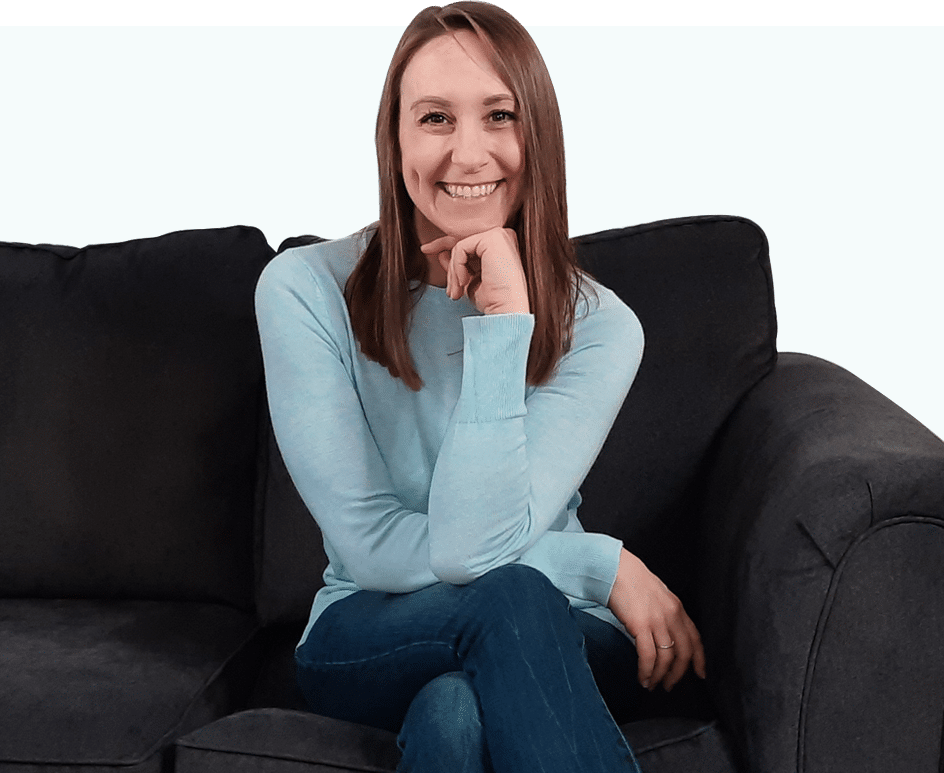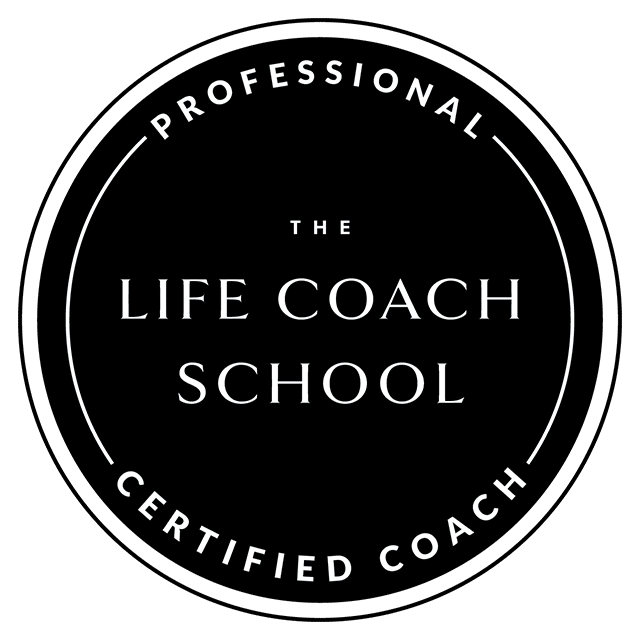If you’re engaging in behaviors you don’t want to engage in, you’re most likely doing more reacting than pausing. When you’re reacting, you’re just doing what you’re feeling driven to do without much thought. But when you pause, you’re thinking about what you’re going to do and you’re actually giving yourself more of a choice about what you’re going to do.
In this episode, I’m going to help you to do more pausing. Listen in to find out how you’ll do it.
Interested in working with me? Click here to get all the info you need!
Never miss an episode by subscribing on your favorite podcast listening app!
WHAT YOU WILL LEARN
- How the think-feel-act process causes your reactions
- How pausing can help you to not react
- How to usefully pause so you can behave how you want to more
FEATURED IN THIS EPISODE
DOWNLOAD THE FULL TRANSCRIPT
DOWNLOAD TRANSCRIPTREAD THE TRANSCRIPT BELOW
Hello! Today I’m talking with you about reacting vs pausing.
These are two options you have when you’re feeling an emotion, when you’re thinking about overeating or bingeing, and when you’re feeling an urge to overeat or binge.
You can react to what you’re thinking and feeling or you can pause.
When you’re reacting, it means you’re going along with what you’re thinking and you’re doing what your emotions and urge are driving you to do.
Basically, you’re follow the think – feel – act process which is part of the thought model that I’ve talked about a little bit on the podcast.
You think a thought, that thought causes you to feel an emotion, and that emotion drives you to act.
When you’re following that process, you’re reacting to your emotions, you’re doing what they’re driving you to do, and it can look like this.
You think, “I want to eat,” that thought causes you to feel desire for food, and you react to that desire by eating food.
You feel the urge to binge so you feel driven to binge, and you react to that urge by bingeing.
You’re feeling an uncomfortable emotion or an urge, and you want to feel better, so you think, “I want to eat something in order to feel better,” that thought causes you to feel desire for food, and you react to that desire by eating the food.
And this process happens with emotions that drive non-eating reactions too.
You feel angry and you react to the anger by yelling.
You feel overwhelmed and you react to the overwhelm by freezing and doing nothing.
You feel ashamed and you react to the shame by hiding.
Now, reacting in itself isn’t a bad thing. There are plenty of times that we react to how we’re feeling and we love the outcome we get.
I’m not mad about how I react when I’m feeling motivated, or happy, or when I’m desiring something that’s not going to sabotage or harm me.
I’m not even mad when I react to an emotion by crying. I’ve cried recently in response to fear and in response to disappointment and I’m totally fine with that reaction of crying. It didn’t harm me, it was just tears.
But, what I don’t want is to have a reaction of yelling, or being snippy, or quitting, or overeating, or bingeing.
There are for sure reactions that I don’t want to engage in.
And I can stop myself from engaging in them. And so can you, if, you pause.
In that think – feel – act process that we all go through, we think a thought, that thought causes us to feel an emotion, and then we are driven to act from that emotion.
But we don’t have to do what that emotion is driving us to do. We don’t have to react. We can interrupt the think-feel-act process and start a new one that we actually want to follow through on all the way to the action.
We can interrupt this because we are not being forced to act in a certain way when we feel the emotion, we are being driven to do it so it’s like we feel the pull toward the action but, we can stop ourselves.
We can pause and start a new think – feel – act process before we react to the feeling in the previous one.
So say I’m feeling angry and I’m feeling driven to yell at someone. I can pause, think to myself, “be calm, you don’t want to yell,” so now that I’m thinking that thought, I’m shifting into feeling a calmer feeling that that thought is creating, and now I can react to that new feeling of calm by speaking in a calmer tone.
Or say I’m eating, and I’m feeling full in my stomach, and I’m thinking about how good the food I’m eating tastes and I’m thinking I want more, so I’m feeling desire to keep eating, and that desire feeling is driving me to eat more. I can pause before I react by eating more, and I think to myself, “I don’t want to eat more, I don’t want to feel too full, I will stop right now.” Because I’m now thinking differently, I’m going to feel differently, I’m going to feel less desire to eat more because I’m making eating more sound unappealing, so I’m actually going to now feel more desire to stop, and that desire to stop will drive me to stop.
You don’t have to react to what you’re feeling. You don’t have to just do what your thoughts are telling you to do.
You can pause and change the direction you’re going to go in.
You can redirect, just like your GPS does when you decide to go a different way than what’s it telling you to do.
You don’t have to go in the direction that your thoughts and feelings are telling you to go in.
You can pause and change it.
When you’re just reacting to all your emotions, even when they’re driving you to take actions you don’t want to take, you’re not really engaging in conscious thinking and managing yourself. You’re just following along in the think-feel-act process.
You’re just agreeing and doing.
There’s usually no self-awareness. So you’re not aware of what your thoughts are saying or what you’re feeling.
You’re not really in the driver’s seat, deciding where you’re going and what you’re doing.
You’re just following the natural process that drives behavior.
And you don’t have to if the behavior isn’t what you want to do.
You have authority over what you do.
You have authority over whether you react to how you’re feeling or if you start a new think-feel-act process that you want to be in.
Use that authority and pause so you can consider where you want to go and what you want to do.
You might find yourself walking to the kitchen, and you notice what you’re doing, so you pause, think about what you’re doing, choose to tell yourself what you really want to do and why, and then feel and act differently.
You’re taking a moment of consciousness.
You’re taking a moment of awareness.
You’re taking a moment to think through what you want to do.
And that’s what will help you to actually do what you want to do.
You’re going to pause and use that pause usefully.
You’re not going to pause and argue with yourself, or argue with your urge or your desire, you’re not going to pause and get frustrated with yourself or judge yourself. That’s not useful.
You’re going to pause and think about your future self, think through what you’re feeling driven to do and decide if it’s what you really want, and you’re going to consider other options that you’ve been practicing thinking about outside of the moment.
You’re not going to just wait until you’re in the moment of feeling how you’re feeling before you think about other options for thinking and acting, you’re going to think this through before you even get to that moment.
You’re going to prepare for how you want to respond to your emotions and urges. You’re going to prepare for what you want to tell yourself, how you want to handle it, what you wan to do, so you’re ready to implement it when it’s time to take that pause.
Also, it’s important that you have enough awareness of yourself that you’re actually noticing what you’re thinking, feeling, or doing.
If you don’t even notice any of those, then you’re just going to react. You’re not even going to know it would be a good time to pause.
You aren’t going to pause if you don’t even know it’s a good time to pause.
So also spend more time paying attention to yourself.
Spend more time being an observer of yourself.
Because only then will you observe that you’re wanting to react a certain way and observe that a pause would be useful.
So be more aware of yourself and do more pausing. Do more thinking through instead of just reacting to your emotions.
Think about your future self, think through what you’re feeling driven to do, and if it’s not what you want to be doing, interrupt the process and start a new one.
Tell yourself something useful, tell yourself something what will shift you into the direction you want to go, so then you will change the feeling you’re feeling and will be driven to do something else.
Let’s do less reacting that results in outcomes we don’t want and more pausing to get outcomes we do want.
Alright, that’s all for today, bye bye.
ENJOY THE SHOW?
Don’t miss an episode, subscribe via your favorite podcast listening app!
Leave me a review on Apple Podcasts






